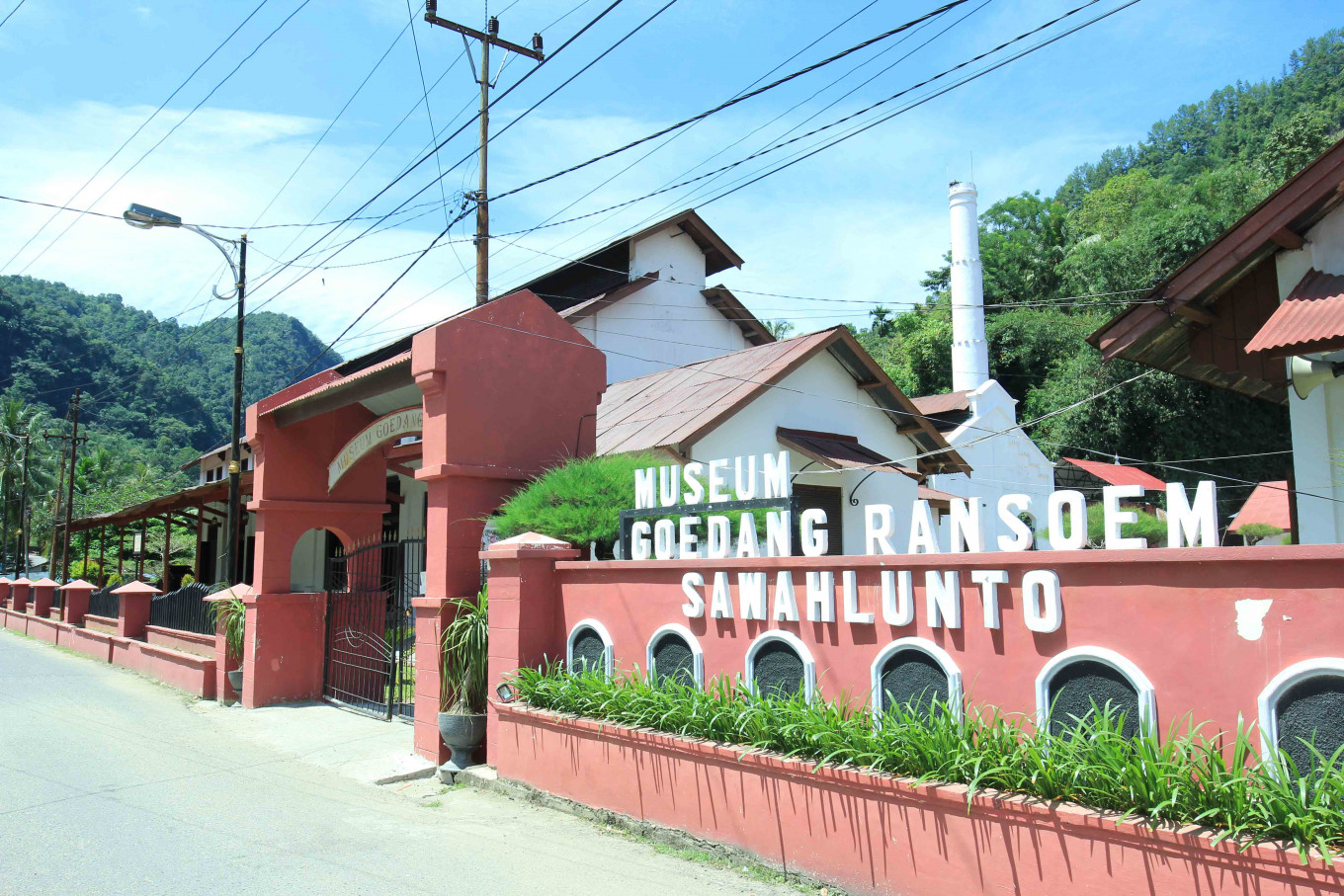Popular Reads
Top Results
Can't find what you're looking for?
View all search resultsPopular Reads
Top Results
Can't find what you're looking for?
View all search resultsWhat to know about the Ombilin coal mine in Sawahlunto
Construction continued until 1891, according to the Culture and Education Ministry, and the company began operating in 1892 with an initial production of 47,833 tons of coal.
Change text size
Gift Premium Articles
to Anyone
UNESCO has included the Ombilin coal mine in Sawahlunto, West Sumatra, in its World Heritage list.
Known as the oldest coal mine in Southeast Asia, Sawahlunto is nestled among the Polan, Pari and Mato hills. Here is everything you need to know about the historical site, as compiled by kompas.com:
History
Dutch geologist Willem Hendrik de Greve discovered significant coal mining potential on the edge of the Ombilin River in 1867.
The first mining activity was later conducted at Sungai Durian village before the Dutch government built a coal mining company in 1888.
Construction continued until 1891, according to the Culture and Education Ministry, and the company began operating in 1892 with an initial production of 47,833 tons. In fact, in 1930, coal production in Sawahlunto managed to fulfill 90 percent of the Dutch East Indies’ energy needs.
However, the coal mine’s glory started to decline when the Japanese arrived and took over Sawahlunto. But since Indonesia’s independence, it has been managed by the government.
Industrial area
Sawahlunto’s rich output in the late 19th century transformed it into an industrial site bustling with activity, including trade. The area even grew to include residential areas.
Read also: Sawahlunto named world heritage site
At that time, the Dutch colonial government had set up a transportation network, such as a railway system that delivered coal from Sawahlunto to the west coast of Sumatra. The government also built Emmahaven Port (known as Bayur Bay), which later became a port for exporting coal using Dutch steam ships SS Sawahlunto and SS Ombilin.
Chained laborers
Ketingganger (Dutch for people in chains) were prisoners from Java and Sumatra who were transported to the mining with their legs, hands and necks in chained up. Once they arrived in Sawahlunto, they worked as laborers.
Tourist sites
Sawahlunto has various tourist destinations, such as the Ombilin Coal Mining Museum where visitors can learn about the history of the company, the tools that were used for mining and visit a former mining site that is has been transformed into a zoo, lake and horse-riding track.
Some parts of the Sawahlunto historical coal mining site have remained unchanged, including the Mbah Soero tunnel, workers’ dormitories and a place to filter coal. (wir/kes)







